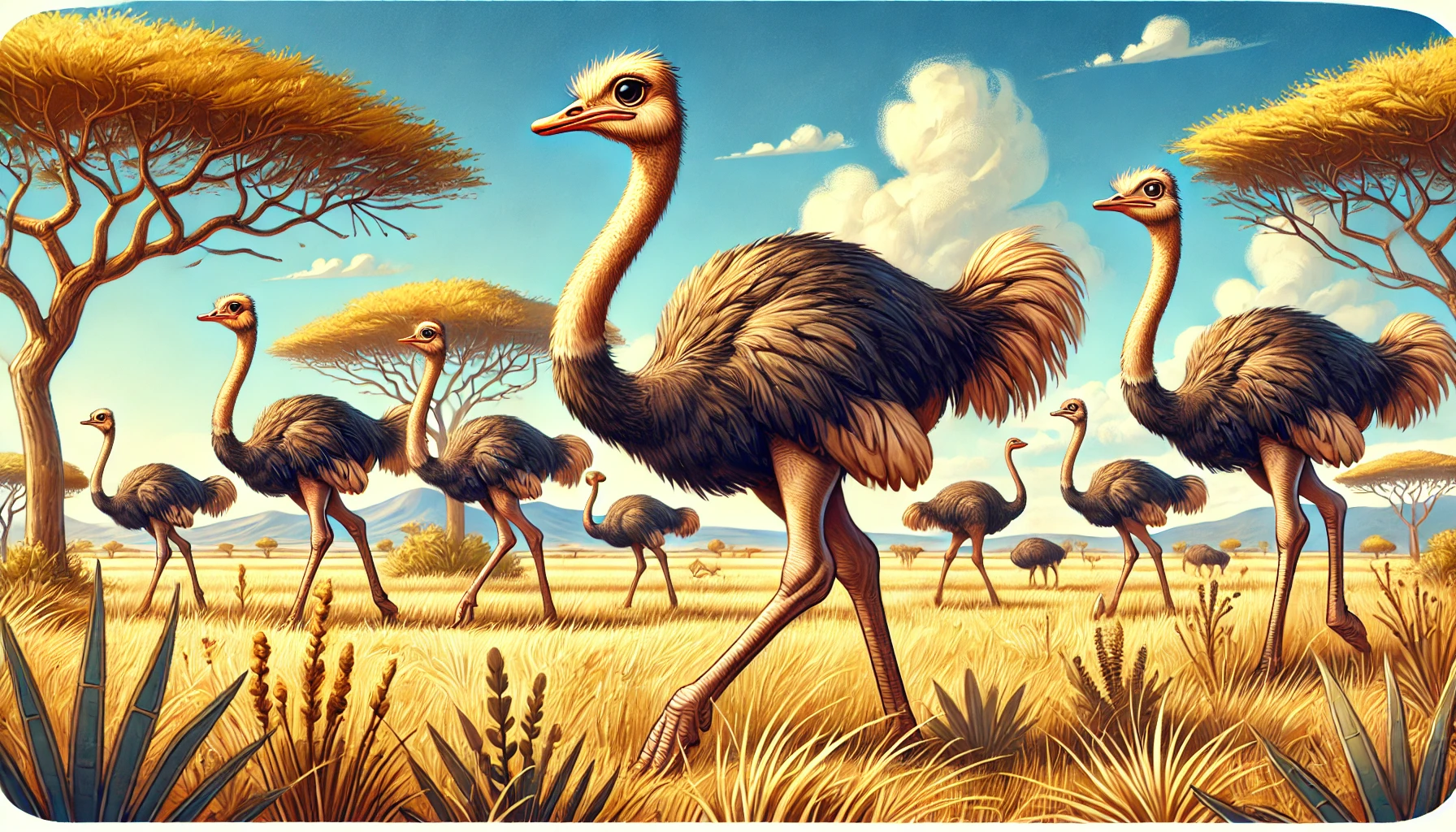Interesting Facts About Ostriches and Their Behavior
Interesting Facts About Ostriches and Their Behavior
Table of Contents:
- Introduction to Ostriches and Their Behavior
- The Different Species of Ostriches
- How Ostriches Use Speed and Strength for Survival
- The Role of Ostriches in Ecosystems
- How to Care for Ostriches in Captivity
- Conclusion: Understanding the Unique Nature of Ostriches
Interesting Facts About Ostriches and Their Behavior
Ostriches are the largest and heaviest birds in the world, known for their incredible speed, powerful legs, and unique appearance. Native to Africa, these flightless birds have evolved extraordinary adaptations that allow them to survive in harsh environments. In this article, we will explore interesting facts about ostriches, their behavior, and their role in ecosystems.
1. The Different Species of Ostriches
There are two primary species of ostriches: the common ostrich and the Somali ostrich. The common ostrich is widespread across Africa, particularly in the savannas and deserts of southern and eastern Africa. This species is known for its impressive size, with males reaching up to 9 feet in height and weighing over 300 pounds. The Somali ostrich, which inhabits the Horn of Africa, is slightly smaller and features bluish skin on its neck and legs. Both species of ostriches share similar behaviors and adaptations but are adapted to different regions of the continent.
2. How Ostriches Use Speed and Strength for Survival
One of the most remarkable abilities of ostriches is their speed. Despite being flightless, ostriches can run at speeds of up to 45 miles per hour, making them the fastest-running birds on land. Their long, muscular legs enable them to cover large distances quickly, which helps them escape predators like lions and cheetahs. In addition to their speed, ostriches are incredibly strong and can deliver powerful kicks with their legs. These kicks are often used in self-defense, with their sharp claws capable of injuring or even killing a predator. These physical traits make ostriches formidable survivors in the wild.
3. The Role of Ostriches in Ecosystems
Ostriches play a crucial role in the ecosystems they inhabit. As herbivores, they feed on a variety of plants, seeds, and insects, which helps regulate vegetation in their environments. By grazing and foraging, ostriches contribute to seed dispersal, promoting plant growth and maintaining biodiversity. Ostriches are also prey for larger predators like lions, hyenas, and leopards, making them an integral part of the food chain. In turn, their eggs and chicks are often targeted by smaller predators, such as jackals and birds of prey. The presence of ostriches in an ecosystem is vital to maintaining the balance between herbivores, plants, and predators.
4. How to Care for Ostriches in Captivity
Caring for ostriches in captivity requires attention to their physical and environmental needs. Ostriches need large, open spaces to move around and stretch their legs, as they are naturally active birds. A secure, spacious enclosure is essential to keep them safe from predators and prevent escape. Their diet in captivity should consist of grains, grasses, and specialized feed that mimics their natural diet. Providing access to clean water and shade is crucial, as ostriches are sensitive to extreme temperatures. Regular health checks and proper veterinary care are also important to prevent diseases and ensure the well-being of captive ostriches.
5. Conclusion: Understanding the Unique Nature of Ostriches
In conclusion, ostriches are fascinating birds with unique adaptations that make them exceptional survivors in the wild. Their incredible speed, strength, and role in ecosystems contribute to the biodiversity of the African savannas and deserts they call home. Whether observed in the wild or cared for in captivity, ostriches continue to captivate people with their impressive size and behaviors. By learning more about ostriches and their role in nature, we can better appreciate these remarkable birds and contribute to their conservation.

<ⓒ WizardMedics (wizardmedics.com)>






